Day 1 of a 4-day Autumn Tour. It was a bright day, with some nice sunny intervals at times, though with a rather blustery E wind.
We were heading for Cley this morning, but as we drove along the coast road at Salthouse, we could see two white shapes in with the cows out on the grazing marsh. We turned the minibus around and parked opposite the Dun Cow. Looking across, our suspicions were confirmed, they were two Cattle Egrets. Through the scope, we could see their small size, hunched appearance and short yellowish-orange bills.
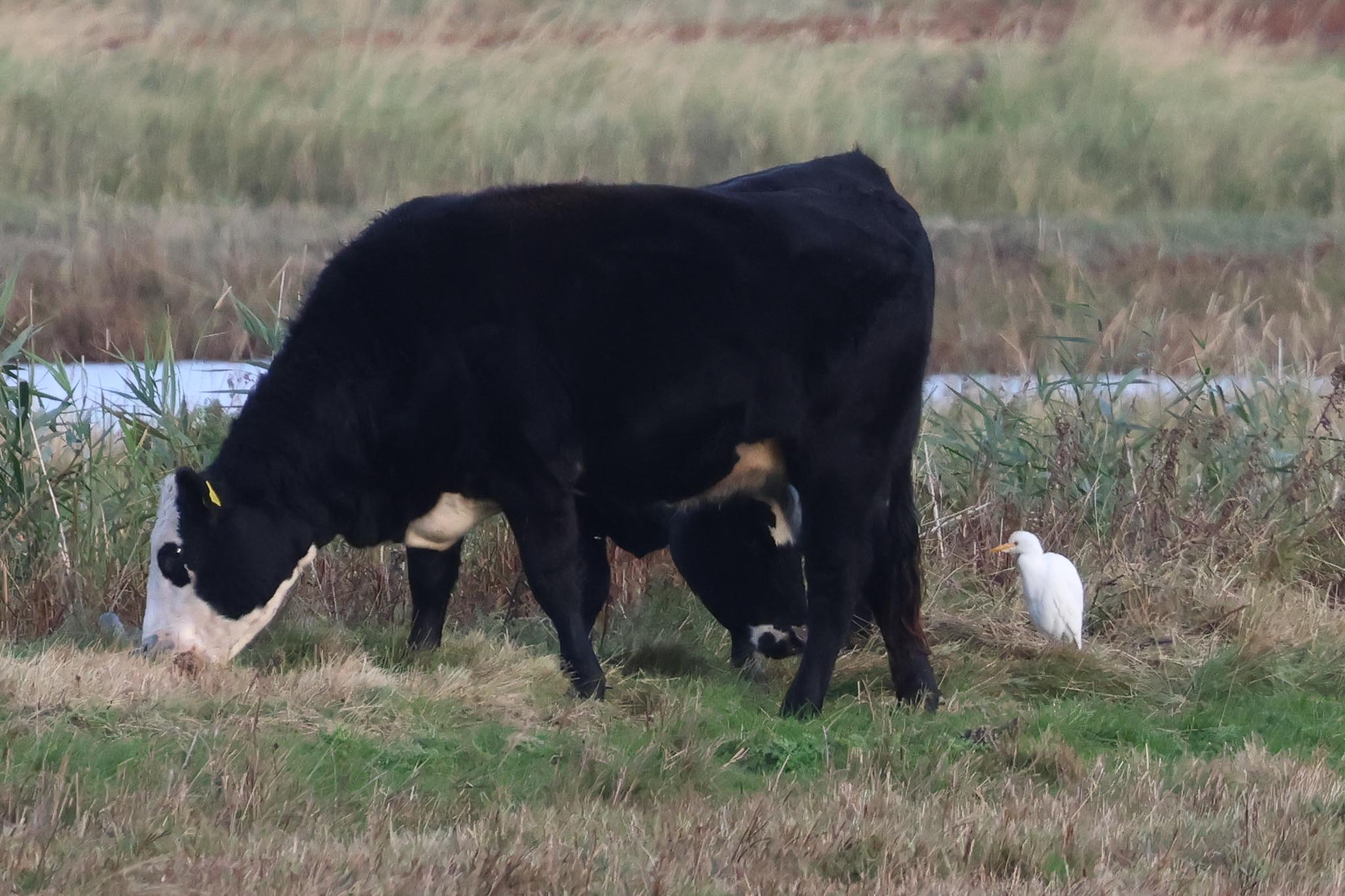
There were a couple of Grey Herons in the field, hanging around the cows too. At one point, one of them chased off one of the Cattle Egrets from the cow it was trying to follow. Two Marsh Harriers flew across at the back, over in front of the shingle, and a Greylag x Canada Goose hybrid was out on one of the floods. After a while, the Cattle Egrets flew off west so we decided to continue on our way.
We parked in front of Walsey Hills. There were just a few Moorhen in view on Snipe’s Marsh this morning, so we set off to walk up the East Bank. Looking over towards Pope’s Marsh, there were lots of Cormorants drying their wings on the islands and several Avocets and a few Black-tailed Godwits feeding in the water.
We stopped to look at the ducks scattered around the grazing marsh beyond the Serpentine, mainly Wigeon, Teal and a few Shoveler, the drakes still mostly in dull brown eclipse plumage but some starting to regain their brighter breeding attire. We heard the yelping calls of Pink-footed Geese and turned to see a large flock come up over the fields inland before dropping back down out of view. A Kingfisher called and flashed past as it dropped behind the reeds into the ditch, heading back towards the road.
From time to time we just managed to catch the sound of Bearded Tits calling ahead of us and as we walked on a small group flew up from the reeds beyond the grazing marsh and across the path in front of us. Some more dropped into the reeds lining the ditch on the edge of the grazing marsh and we could hear the two groups calling to each other. Three Bearded Tits appeared in the top of the reeds in the reedbed briefly, but quickly dropped down again out of view. We stopped to watch and listen and had several more views as birds zipped across over the reeds calling, before they went quiet.
On over the main drain, a Greenshank flew over calling and landed towards the back of the Brackish Pool, with a single Redshank. We got it in the scope, the whiter underparts of the Greenshank striking in the morning sunshine. A lone Ruff dropped in to the saltmarsh behind and a raft of ten Little Grebes was swimming together out on the water.
After the recent big tides and northerly winds, Arnold’s Marsh was full of water. We could see a Curlew on the saltmarsh, and lots of Redshank along the far edge of the water with another Ruff. A single Pintail was in with the other ducks at the back.
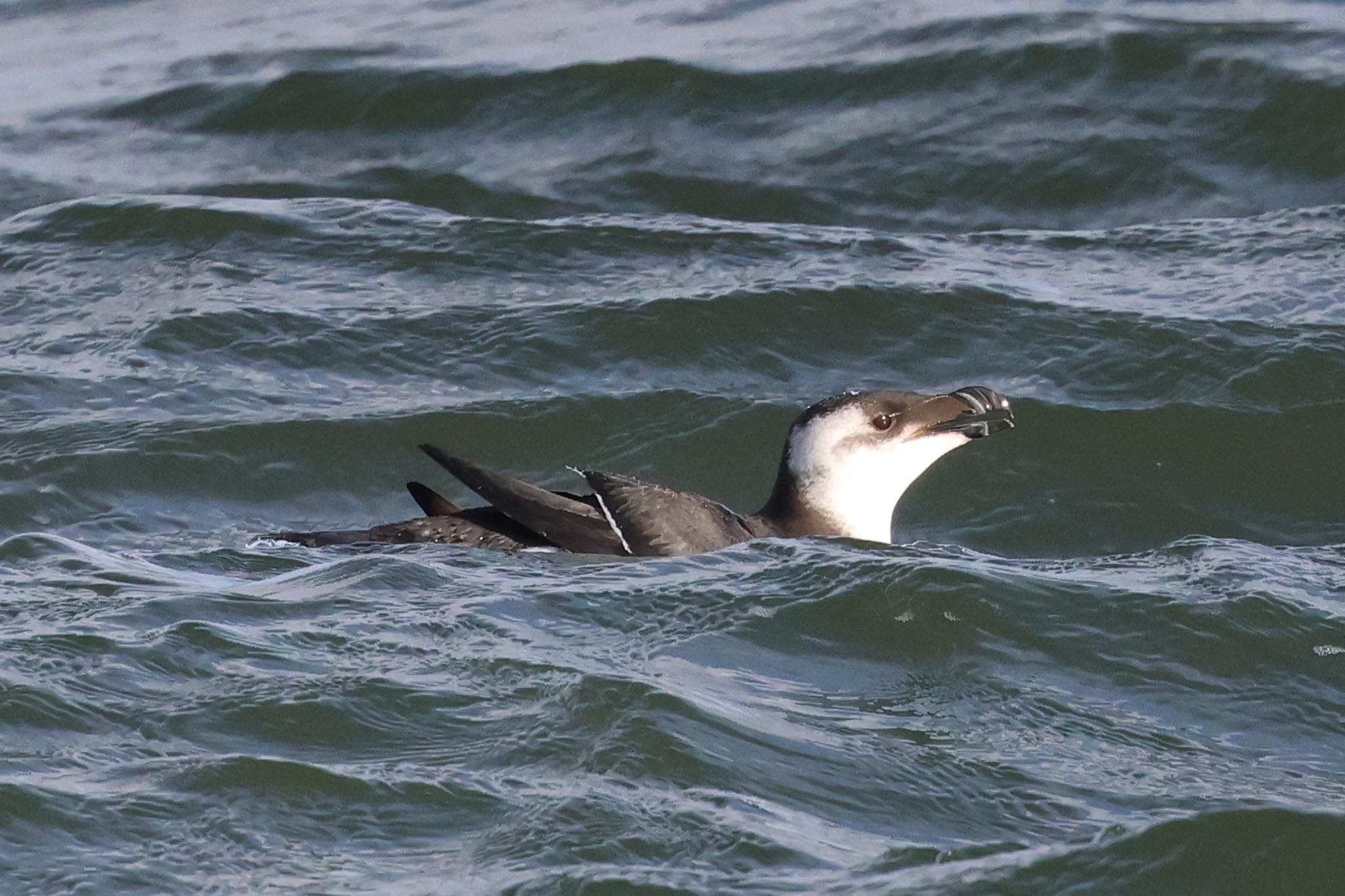
Out on to the beach, and the first thing we noticed were all the Razorbills on the sea. We got the scope on a raft out in front and then a couple drifted past diving just behind the breakers. We got the scope on a Red-throated Diver out on the water too. A trickle of Gannets passed by offshore.

A melee of gulls was feeding over the water away to the east, and we realised they were quickly working their way towards us. They were mainly Black-headed Gulls and Herring Gulls, but we picked out three Little Gulls in with them, a 1st winter with black ‘w’ across it upperwings, a 2nd winter with black spots in its wing tips, and an adult winter with much blacker upperwings. A single Mediterranean Gull was in there too, a 2nd winter also with some black still in its wingtips. The melee came right past in front of us, with two juvenile Gannets joining in and plunge diving into the sea in the middle of the group. Great to watch!

We had seen one flock of Starlings flying west as we walked out along the East Bank, but it is can be hard to tell whether they are local birds of migrants coming in. From out the beach now, we picked up several flocks flying in over the sea, confirming our suspicions that they were arriving from the Continent today. A few Skylark came in off the sea too. There was a trickle of wildfowl arriving too: a few small flocks of Wigeon moving, Teal coming in, small groups of Brent Geese and a single Shelduck passing offshore. We picked up a single drake Common Scoter on the sea, which we got in the scope, and another female flew west.
There was a lot to see out to sea this morning, but eventually we had to tear ourselves away and walk back. Looking across to Pope’s Pool, we could see more Black-tailed Godwits out there now, but nothing with them. A Little Grebe was in the middle of the weed out on Don’s Pool. A Water Rail was calling in reeds by the road back at Snipe’s Marsh and when we stopped to look back along the edge to check if we could see it, a Kingfisher shot across. It landed in the reeds at the back where we got it in the scope. Eventually it flew again, round over the reeds, then disappeared across the road.
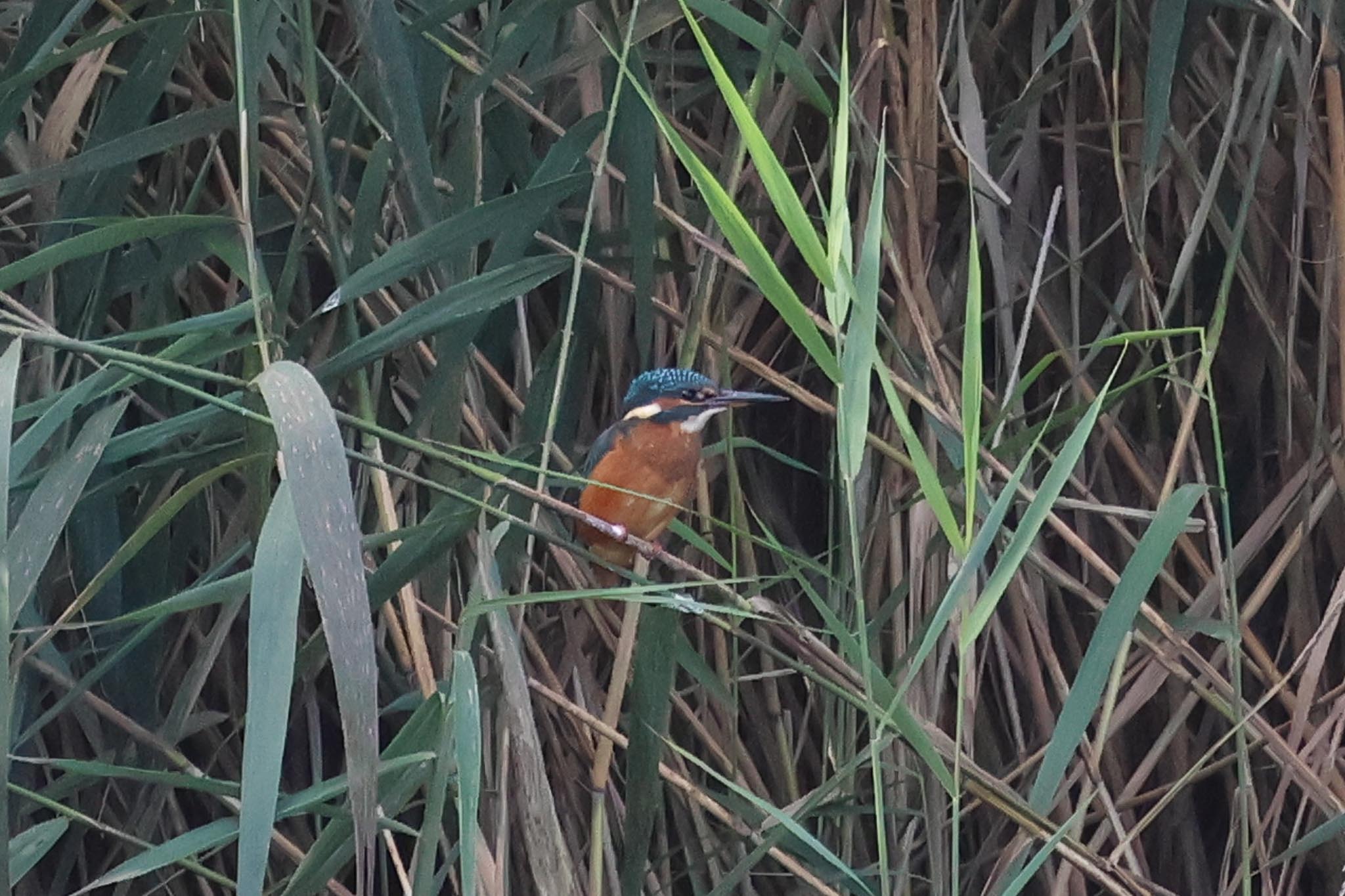
We had a quick look at the feeders in Walsey Hills from, the footpath. A succession of tits and Goldfinches dropped in and there were several Chaffinches calling in the bushes. Then a Sparrowhawk shot through, spooking everything, and afterwards it went rather quiet.
We headed round to the Visitor Centre next and, after a quick loo stop, we made our way out to Bishop Hide. There were still quite a few Black-tailed Godwits out on Pat’s Pool, but no sign of the Dowitcher which had apparently been here until it was flushed by a Buzzard and flew off east. Most of the Godwits were in grey non-breeding plumage but one very orange Icelandic bird still largely in juvenile plumage was feeding in front of the hide. There were several Ruff out on the scrapes further back and two Common Snipe were hiding in with the ducks sleeping on the bank away to our left.

There were lots of ducks on here today – lots of Wigeon, Teal and Shoveler. We picked up three Pintail in with them, a moulting drake and two females, before they flew off. Another Sparrowhawk flew over and disappeared off towards the village.
We headed back to the Visitor Centre for lunch and it was sheltered enough from the breeze that we were still able to sit out in the picnic area in the sunshine today. We kept one eye on the scrapes and picked up three Golden Plover which dropped in on Pat’s Pool over lunch.
After lunch, we made our way along the coast to Stiffkey. As we walked along the permissive path by the road, a flock of Long-tailed Tits flitted ahead of us down the hedge. A Red Kite hung in the air over the wood inland. We found another mixed flock of tits along the river, with two Blackcap and a Goldcrest in with them. A Comma butterfly basked in the sunshine on the blackberries.

We could hear a Spotted Redshank calling from the Fen as we walked out, and from up on the seawall we got it in the scope, busy preening. It was low tide, so there were not so many other waders on the Fen this afternoon, just a few Ruff and Lapwing. There were lots of ducks, Wigeon, Teal, Mallard, Shoveler and Pintail, a white farmyard Greylag and an Egyptian Goose.
As we walked down along the seawall, there were more waders in the harbour channel, lots of Redshank and a single Grey Plover with them. Scanning inland, we noticed a Raven up over one of the small woods, chasing a Common Buzzard. There was not a lot of difference in wingspan between them and when the Raven was then chased by a Jackdaw it looked tiny by comaprison. A second Raven came up out of the trees briefly, and we watched the two of them tumbling together in the wind before they dropped back down out of view. Raven is still a fairly scarce bird in Norfolk, although numbers now seem to be increasing.
Continuing on to the corner overlooking the harbour, we could see lots of gulls of various sizes loafing out on the mud. We took advantage to talk a little about gull identification, looking at a couple of Common Gulls in with the Black-headed Gulls, then turning our attention to the Great Black-backed and Herring Gulls with their pink legs, before we managed to find a single smaller yellow-legged Lesser Black-backed Gull out there too. There are increasing numbers of Brent Geese out in the harbour, as more birds return here for the winter.
There were more waders out on the mud in the harbour – lots of Oystercatcher, Curlew, a few Knot, Turnstone and Ringed Plover. The first surprise of the afternoon was a Whimbrel which flew over from behind us before dropping down out on the saltmarsh out of view. This is a late record of this species for here, around the typical date for the last of the year in Norfolk, as they mainly pass through earlier on their way south in the autumn.
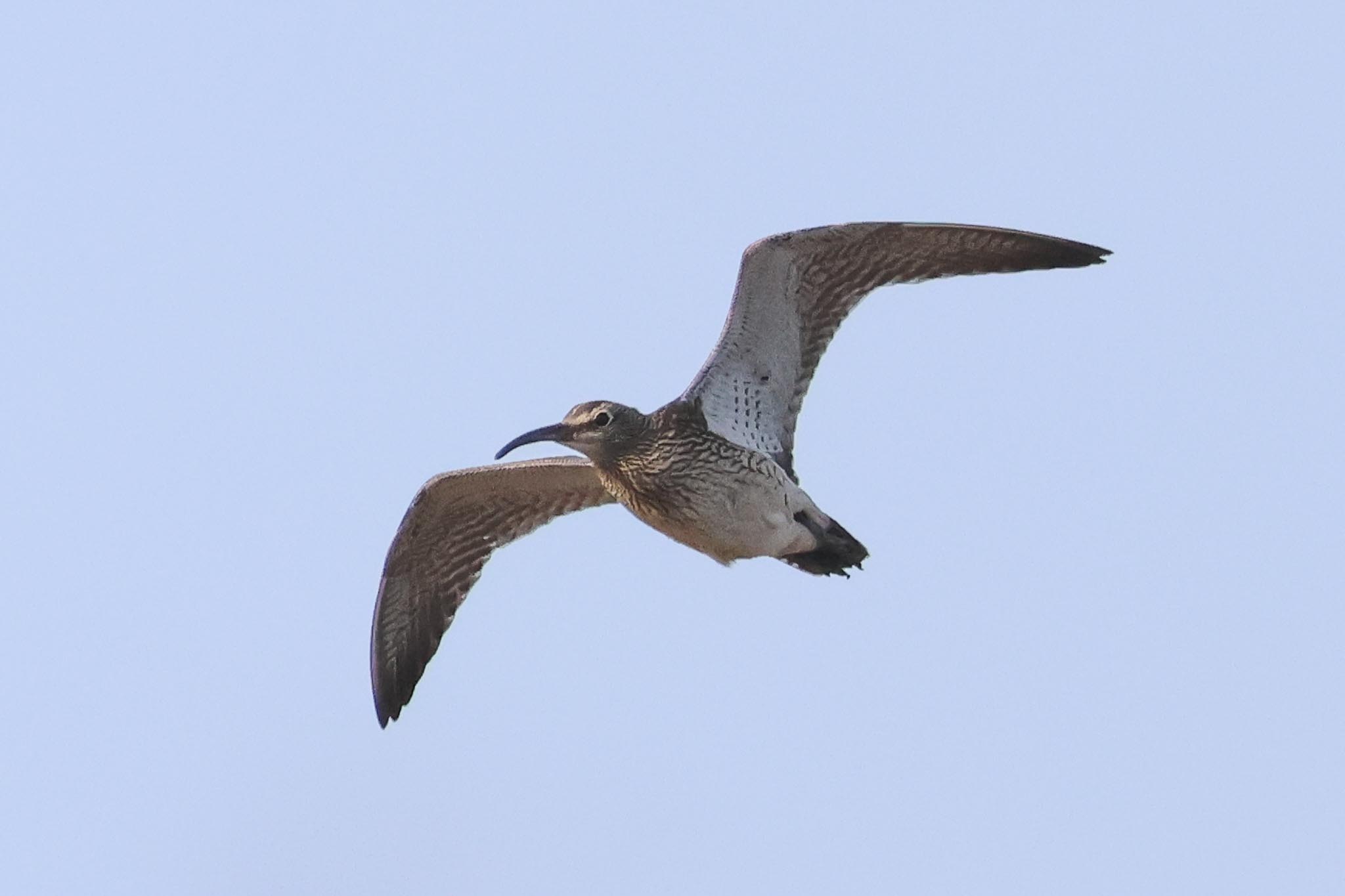
Then a Land Rover pulled up behind us and someone walked straight out across the harbour with two dogs which flushed everything. Most of the gulls settled again further over. The Whimbrel flew up and back past us, landing out of view again back the way it had come towards the Fen. We noticed a couple of Stonechats on the bushes out on the saltmarsh behind us too.
Back to the minibus, and we headed back along the coast to Cley and out along the boardwalk to the main central hides. We thought if we tried here later today we might stand a chance of the Dowitcher having returned and also of picking up some gulls coming in pre-roost. There was not much on Simmond’s Scrape – the water level is high now after the recent rain – and looking over to Pat’s Pool – there were more Black-tailed Godwits back, but still no sign of the Dowitcher (it would return later this evening, but after we had left).
At least the gulls were starting to come in. Scanning through the hordes of Black-headed Gulls we found a single white-winged adult Mediterranean Gull in with them. Through the scope, we could see its winter black bandit mask and heavier red bill. A few larger gulls starting to drop in too, and it didn’t take long to pick out a 1st calendar year Caspian Gull (although breaking with our advice to start off focusing on adult large gulls only!). It preened for a while in with the other gulls, then flew up and disappeared off west over the hides.
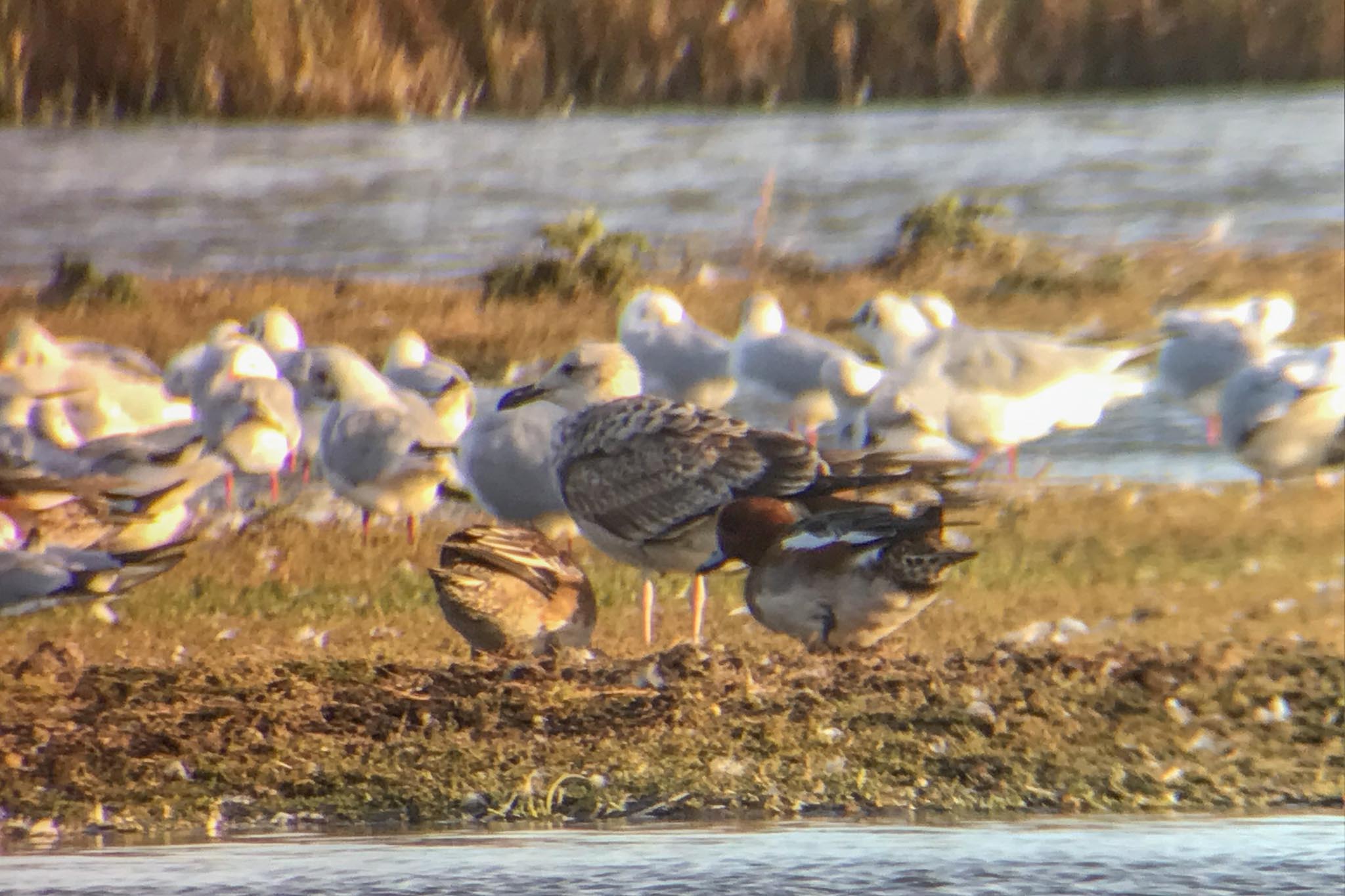
The second surprise of the afternoon was when a large group of Cattle Egrets dropped in onto one of the islands, again ahead of going in to roost. There have been a small number here the last few days, and more further west along the coast, but there were a lot more here than usual. We couldn’t get a clear view, as there were some behind the grass, but we counted a minimum of 18 Cattle Egrets and a single Little Egret with them (later, others managed to count 19 Cattle Egrets).
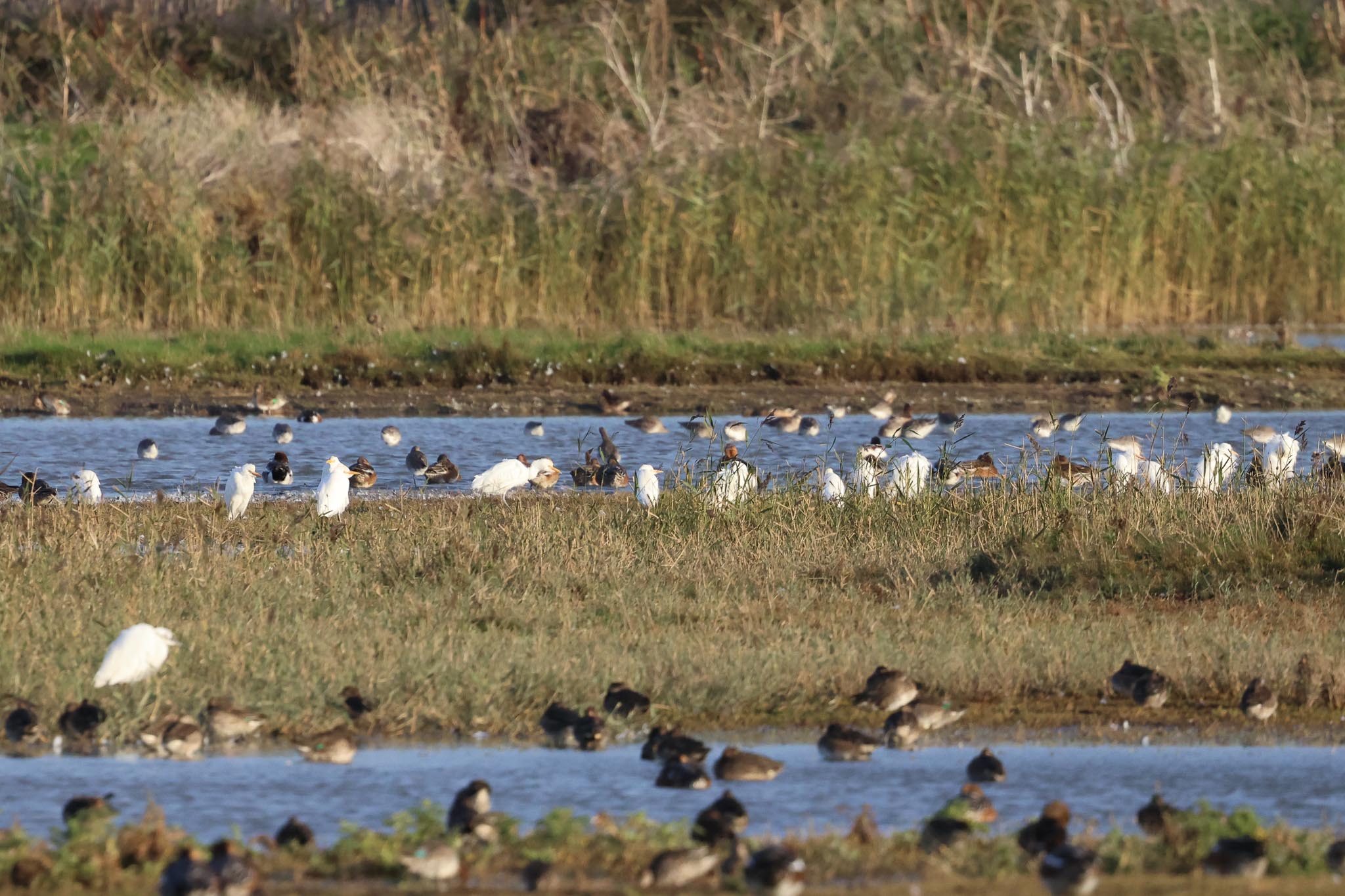
It was time for us to head back, or we would be late for dinner. As we got back to the car park, more Pink-footed Geese came up from the fields beyond the Visitor Centre and flew overhead calling. A wonderful sight and sound, so typical of here in Norfolk at this time of year, and a nice way to finish our first day.
















